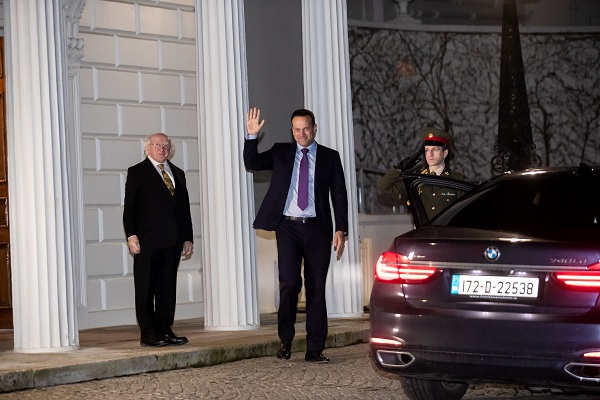Dublin, (Samajweekly) A draft agreement on the formation of a new Irish government was reached among the leaders of three major political parties here after more than a month of formal negotiations.
On Monday night, Fianna Fail’s Micheal Martin, Fine Gael leader and incumbent Prime Minister Leo Varadkar, and the Green Party’s Eamon Ryan, signed off on the draft agreement, which will be up to the final approval of the members of their respective parties, reports Xinhua news agency.
If the draft agreement is approved by all three parties, Ireland will see a government formed by two rival political parties of Fine Gael and Fianna Fail for the first time in history.
It will be the second time for the Green Party to enter the government since it was founded in 1981.
Details of the draft agreement were not immediately available though some of its contents have been reported by local media.
It is most likely that the complete text of the draft agreement will not be made to the public until it has been approved and finalized by all three parties.
Broadcaster RTE reported that if the agreement is ratified by all the parties it would see Fianna Fail leader Micheal Martin serving as Prime Mminister of the new government until December 2022, after which the role will be passed onto Fine Gael leader Leo Varadkar for the remaining years of the term of the new government.
The term of an Irish government is not more than five years, according to Irish laws.
RTE quoted Martin as saying just before attending the sign-off of the agreement at Government Buildings that the program reached for the new government is a compromise of the policy proposals of the three parties.
“Every party doesn’t win everything,” he said.
Varadkar, who has been a caretaker prime minister of Ireland since the February general election in the country, confirmed to local media on Monday morning that there will be a rotating taoiseach (prime minister in Irish) role as part of the program.
He also said that he did not know what post he would assume in the new cabinet.
Ryan of the Green Party said that the agreement contained a lot of things which, if delivered on, would be a huge achievement.
He also disclosed that no decisions have been made on the selection of ministries of the new government, saying that the process would be a “complex jigsaw” that the leaders of the three parties would have to work out.
Roderic O’Gorman, a Green Party member of the lower house of the Irish parliament, confirmed to local media that there was no discussion on the cabinet positions of the new government during the negotiations and such issues will be discussed among the party leaders only after the agreement is approved by the three parties.
It is reported that the approval of the agreement requires simple majority support from all the members of Fianna Fail and Fine Gael and two-thirds support from the members of the Green Party.
Formal negotiations on the formation of the new Irish government among the three parties took place in early May with each party trying to incorporate their policy proposals into the programs of the new government to a maximum possible extent.
One of the thorny issues in the government formation talks was the 7 per cent annual reduction in greenhouse gas emissions proposed by the Green Party, which was initially deemed by both Fine Gael and Fianna Fail as too ambitious and unpractical, according to media reports.
The Green Party’s proposal to annually reduce carbon emissions by 7 per cent throughout the term of the new government also poses a big concern for Irish farmers, which have a big say in the country’s political life, said local media.
In the general election held on February 8, Fianna Fail won 38 seats in the lower house of the Irish parliament, followed by Sinn Fein (37 seats), Fine Gael (35 seats), and Green Party (12 seats) with the other remaining seats in the 160-seat house to be held by other smaller parties and independents.
According to Irish laws, a new government can only be established if it can win the simply majority support or over 80 seats in the lower house.
As both Fianna Fail and Fine Gael refuse to form a coalition government with the left-wing party Sinn Fein, they went to the Green Party for its support based on the belief that only such a coalition government can last long.










